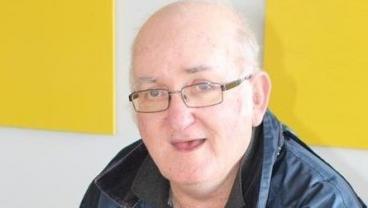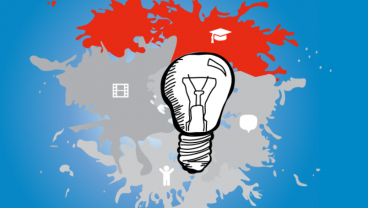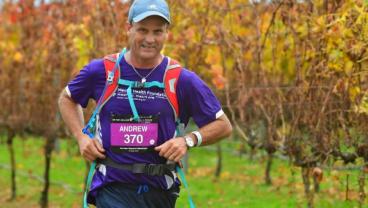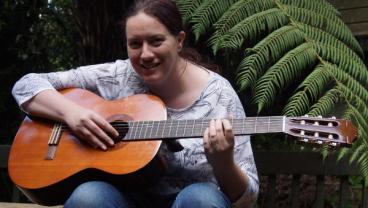Nine hear voices
A cacophony of creativity
Almost 600 years ago an illiterate, French peasant girl rose to prominence in the court of Charles VII and led the French army to victory at the siege of Orleans in 1431.
That same year she was captured by her allied English-Burgundian enemies, tried and convicted as a heretic and burned at the stake. She was just nineteen years old. Throughout it all – even when threatened with torture and death – she insisted her actions were guided by voices and visions from God.
Although she was declared innocent and a martyr 25 years after her execution, the beatification of Saint Joan of Arc did not take place until 1920. Just eight years after that, in 1928, John Forbes Nash, Jr, was born. An extraordinary mathematician, John’s theories are used in market economics, computing, evolutionary biology, accounting, politics and military theory.
He was 31 years old when he too started hearing voices. It did not stop him from being awarded the John von Neumann Theory Prize (1978) and the Nobel Memorial Prize in Economic Sciences (1994). A former professor described him as “a genius”. Despite numerous examples of historical and contemporary achievement across the arts, sciences and just sheer human endeavour – the stigma associated with hearing voices remains.
Immersed in a cacophony of sound
It is this fear of society’s prejudice, of being misunderstood, judged and of not making sense that initially held back nine very brave people – Paul, Cindy, Peter, Sylvia, Wilbur, Mary, Georgina, Andy and Annie – from sharing their experiences of hearing voices. “I was worried that my story would paint me as being weird and people would laugh at my story,” Georgina says. Taimi Allan from Mind and Body Consultants says their fears were not unfounded.
As part of last year’s reTHiNK Schizophrenia billboard campaign the project team ran a survey to find out what the most misunderstood truth about schizophrenia is. “It turned out that most survey respondents believed that you couldn’t recover from a diagnosis of schizophrenia,” Taimi says. “And that people didn’t particularly understand the reality of hearing voices.” This year, they aimed to transform that misunderstanding by creating an installation called A Cacophony of Creativity, with support from the Mental Health Foundation.
“For 17 years I stayed well by creating structure and routine in my life. I went back to study, I met my second husband and I did lots of exercise. I had periods of depression, but never to the point where I didn’t achieve what I wanted to. Then, when I was 47, I was sleeping poorly and started hearing voices again.” Annie
The temporary Auckland-based installation became a three-dimensional, multi-sensory experience laced with sight, sound and touch. There were nine voices stations with two sets of headphones.
Each story came to life with skilled readings from voice actors, together with furniture, clothing, art, household items and other objects that symbolised aspects from each person’s life. Visitors immersed themselves in a total experience, which started with the same cacophony of voices, leading on to a soundscape based on a central theme from each person’s experience. For Georgina, who works in the computer industry, there are pops and whistles and other noises that come from computer soundscapes; Andy’s story was very spiritual and there is a haunting Māori flute in the background. Taimi explains, “It is interactive because you can touch it, you can feel it, you hear it and you can see it. You’re actually part of their world.”
“I’m happier now than I’ve been for 20 years. I’ve learnt everybody’s different and that we are all complex human beings. I’m not all bad and I’m not all mad either. I do have something to contribute.” Paul
Cacophony leads to creativity
The road that led to this finale was not always smooth. After all, it can be scary to share an experience of mental distress with people close to you – let alone a room full of strangers.
Yet, interviewer and Mind and Body Consultants’ Like Minds, Like Mine promoter Philippa Coyle says participants’ desire to help others understand more about hearing voices – and the reassurance they could retain a level of anonymity – helped overcome any fears. She says that as each person told her their story she could, by the end of the interview, completely understand why they heard voices. “I was incredibly moved by the honesty of their stories, the best and worst of what they’d been through and where they were now. Their life journeys make a lot of sense; hearing voices is just a natural experience – and that is the beauty of these stories.” The name for the installation, A Cacophony of Creativity, came from the term often used for describing hearing voices.
“At first I thought the voices were universal spirits coming to either help me or punish me. [Now] I know the voices are actually me, but if I’ve had a hard day I like to think of them as spirits… I know they react to me and what I’ve got on, so if I’m feeling good, they feel good too.” Georgina
“All of us experience thoughts in our head that are sometimes negative and sometimes positive, but you can kind of block them out,” Taimi says. “I think the scary thing for people who hear voices is that they are as loud as you or I speaking. It literally is cacophony of voices that overwhelms the world you live in. You need to have some really big tools in your toolbox to be able to block out an external voice when it’s talking to you.”
“I first heard God’s voice three years ago. I thought I was queen of the world. I was on a real high. I thought I was going to be rich and famous, because God didn’t usually talk to people…[Now] I believe I was sane in my insanity. I wasn’t sick and never truly have been. And even though I don’t hear God so much now, I know he’s still there.” Mary
The team also wanted to ensure the end message is that people can recover and gain some real strength and creativeness out of hearing voices. “We think it is an important part of the journey to see how far people have come, so all of the stories finish positively, regardless of what stage of recovery they are in,” Taimi says.
Stories of survival
Feedback from participants has been very positive. Cindy, whose journey has involved a very abusive childhood, was thrilled that her story could help others to rethink their opinions about people who hear voices. “It makes one think twice about judging a person for hearing voices,” she says. Others had mixed feelings of fear, pride and relief. “I was moved by the exhibit and the other stories and I loved the props,” says Andy.
“Voices can be good or bad, a gift or a curse, depending on the individual and how they apply the skills to manage the voices. You can still have a successful life if you rise above the prejudices, opinions and lack of understanding. Be strong and go for gold, I reckon – don’t let anything real or unreal hold you back.” Cindy
Georgina admitted to being nervous, “I wasn’t even going to go but I did, and liked it – listening to other stories was interesting too.” For Sylvia, Paul and Annie the experience triggered feelings that had not come up for a long time – it was a somewhat surreal experience for them. Paul says listening to his own story made him feel like a survivor. “I’ve never felt that way before. I thought, ‘Here is a story simply told that people might be able to relate to’.”
“My advice to people on the recovery journey is to have a person on board who is really positive and believes you can recover. When I was told I had schizophrenia, I thought, ‘Help this is entrenched, I can’t recover’. But my mother was really, really positive and said I could do it – I could function again. It just takes time.” Sylvia
All reported a sense of personal and meaningful contribution that their story might help others now and in the future.
Highlighting a sense of hope
The opening night audience described A Cacophony of Creativity as moving and inspiring.
“Visually, it was amazing,” Carlton Quartly says. Carlton was visiting from the Mental Health Commission in New South Wales (NSW) to learn more about the innovative work happening in mental health in New Zealand. He believes events like A Cacophony of Creativity will assist the NSW Mental Health Commission with its future direction and activities.
“The stories were sensitive and challenging to listen to,” says Kevin Smith, senior product specialist at Johnson and Johnson. He adds, “The creative settings beautifully complemented the story.” Kevin has been a mental health nurse with more than 30 years of experience, and is extremely supportive of positive mental health.
Others visitors came because they had a history of mental illness in their family; because they are passionate about mental health; teach students about mental health; or are exploring new ideas to share with fellow health professionals.
“I was 30 years old before I understood my mental distress.... I thought my experience was partly spiritual and partly psychosis, so I couldn’t figure out what it was… I began counselling which really helped. I was able to deal with things that happened in the past. This helped me make sense of why I was feeling the way that I was. It was a big step forward.” Wilbur
All left feeling positive about the exhibition and with different takes on what they’d learnt. Kevin was reminded about the importance of validating people’s stories; nursing lecturer Collette Adrian recalled that people who experience mental distress also have jobs, families and hobbies; Carlton saw there were many other vital parts to recovery such as the arts, meditation, spirituality and exercise; and Lance Burdett, a specialist resilience and change consultant, felt the stories illustrated the importance of seeking help, talking to people and, most importantly, of keeping on going.
“I finally thought, ‘I want more out of life than this’. So I did a diploma of visual arts, graduated, and the moment they gave me my certificate and shook my hand, the voices stopped for about six months. That’s when I realised I needed to start taking some responsibility – that the more I ignored them, the more they started leaving me alone.” Andy
Many plan to use parts of the exhibition in their own work and all encourage other individuals and organisations to listen to – and where possible view – A Cacophony of Creativity. “Consumer stories can communicate vividly the complexity and intensity of a person’s experience of care and support,”
Carlton says. “It gives a face to the process and makes it real. “It reminds us how important it is to find time to sit and truly listen to their stories, the experiences of their childhood, family and friends, and to gain an awareness of the impact of their mental illness on their lives and the lives of those around them.
The common thread is the need to hold onto a sense of hope.”
Social inclusion prevents stigma
Taimi believes all nine are very powerful stories. “There’s this epiphany you get when listening of ‘oh my god, of course!’”
She says that all the participants have not only gone through something troubling and come out the other side, but they have also grown and are stronger people because of it.
This strength is reflected in Georgina and Paul’s final thoughts.
“The most positive thing was that my story might help break down the stigma around our experiences. If that helps people, then I would be pretty happy,” Georgina says. Paul adds the stories emphasise an important aspect of the Like Minds, Like Mine programme: social inclusion. “We are all standing in life; we are not at the margins or outside the margins,” he says. “We are engaged and engaging in life. I think this shows social inclusion is possible even though some people hear voices.”
Good reads

Poetry as a way through
Terry's story
Terry Lynch is a radio show host and prolific poet penning his... Read more

Editorial
The benefits of having experienced mental illness
It feels almost flippant to be talking about the benefits of having... Read more

Two+ Rethink programme takes off
People working in education and housing organisations in the North Island will... Read more

Opening the conversation
PTSD - What to say
Do you know someone with Post-Traumatic Stress Disorder (PTSD)? It can be really... Read more



